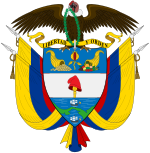
Cartago is a city in southwestern Colombia, about 187 miles west of Bogotá. It is in the extreme northern portion of the Valle del Cauca Department. It is located very close to the city of Pereira, about a 20-minute drive. It is the sixth largest city in Valle after Cali, Palmira, Buenaventura, Tuluá and Jamundí. In 2019, it had a population of approximately 135,000 inhabitants.

Santiago de Cali, or Cali, is the capital of the Valle del Cauca department, and the most populous city in southwest Colombia, with 2,227,642 residents according to the 2018 census. The city spans 560.3 km2 (216.3 sq mi) with 120.9 km2 (46.7 sq mi) of urban area, making Cali the second-largest city in the country by area and the third most populous after Bogotá and Medellín. As the only major Colombian city with access to the Pacific Coast, Cali is the main urban and economic center in the south of the country, and has one of Colombia's fastest-growing economies. The city was founded on 25 July 1536 by the Spanish explorer Sebastián de Belalcázar.
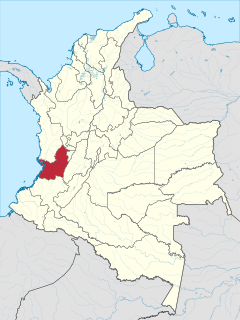
Valle del Cauca, or Cauca Valley, is a department of Western Colombia. It is on the western side of the country, abutting the Pacific Ocean. Its capital is Santiago de Cali. Such other cities as Buenaventura, Buga, Cartago, Palmira and Tuluá have great economical, political, social and cultural influence on the department's life. Valle del Cauca has the largest number of independent towns with over 100,000 inhabitants in the country, counting six within its borders. Buenaventura has the largest and busiest seaport in Colombia, moving about 8,500,000 tons of merchandise annually.

Alfonso Bonilla Aragón International Airport formerly known as Palmaseca International Airport is located between Palmira and Cali, the capital of Valle del Cauca Department, Colombia. It is Colombia's fourth-busiest airport in passenger volume, with 5,600,000 people using the airport in 2016, and third largest in area and construction. The airport often serves as the alternate airport for Bogotá - El Dorado Int'l Airport and other Colombian airports.
Luis Andrés Caicedo Estela was a Colombian writer born in Cali, the city where he would spend most of his life. Despite his premature death, his works are considered to be some of the most original produced in Colombia. Caicedo led different cultural movements in the city like the literary group "Los Dialogantes", the Cinema Club of Cali and the "Ojo con el Cine" Magazine. In 1970 he won the First Literary Contents of Caracas with his work "Los dientes de caperucita" that opened the doors of national recognition for him. Some sources say that he used to say that to live more than 25 years was a shame and it is seen as the main reason of his suicide on March 4, 1977, when he was that age.

Ibagué is the capital of Tolima, one of the 32 departments that make up the Republic of Colombia. The city is located in the center of the country, on the central mountain range of the Colombian Andes, near Nevado del Tolima. It is one of the most populous cities in the country, with about 529,635 inhabitants, making it the seventh (7th) most populous in Colombia. It was founded on October 14, 1550, by the Spanish captain Andrés López de Galarza. The city of Ibagué is divided into 13 communes and the rural area has 17 corregimientos. As the capital of the department of Tolima the city hosts the Government of Tolima, the Departmental Assembly, and the Attorney General's Office. It is the main epicenter of political, economic, administrative, business, art, culture, and tourism activities in the area.
The Western Bloc of the Revolutionary Armed Forces of Colombia was the smallest of the Revolutionary Armed Forces of Colombia's (FARC) blocs in size, although not in military capability. It was often held responsible for attacks that occurred in Cali and the surrounding area. The specific divisions of the group are arguable. Some of its divisions or fronts, as they were commonly known as, are shown below. Many of these fronts worked together at times towards a certain mission, while others were further divided into columns and companies with a smaller number of members. For more general information, see FARC-EP Chain of Command.
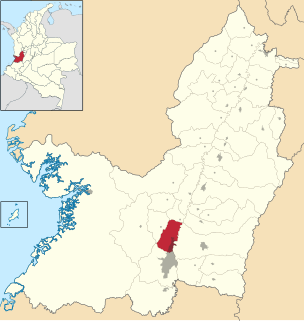
Yumbo is a small, industrial city and municipality in western Colombia. It is located in the Valle del Cauca Department, just north of Cali. In 2019, it had a population of approximately 130,000 inhabitants.

Buenaventura is a coastal seaport city in the department of Valle del Cauca, Colombia. Buenaventura is the main port of Colombia in the Pacific Ocean.
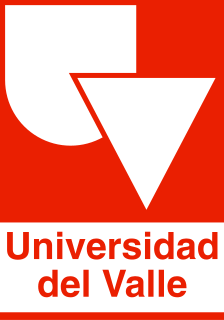
The University of Valle, also called Univalle, is a public, departmental, coeducational, research university based primarily in the city of Cali, Valle del Cauca, Colombia. It is the largest higher education institution by student population in the southwest of the country, and the third in Colombia, with more than 30,000 students. The university was established by ordinance No. 12 of 1945, by the Departmental Assembly as the Industrial University of Valle del Cauca, under the leadership of Tulio Ramírez Rojas and Severo Reyes Gamboa.
The following is a timeline of the history of the city of Bogotá, Colombia.
The following is a timeline of the history of the city of Cartagena de Indias, Colombia.
Ronald Mayorga Sánchez is a Colombian journalist and TV anchor of La Red on Caracol Television in Colombia. He works as a radio journalist who works with "Blue Radio", one of the radio stations imported from Latin America as a host in Vox Populi.
Guillermina Bravo Montaño is a Colombian teacher and politician of the Independent Movement of Absolute Renovation (MIRA) party. Currently she is a member of the Chamber of Representatives of Colombia. She was Deputy of the Department Assembly of Valle del Cauca from 2008 to 2011.
The following is a timeline of the history of the city of Tegucigalpa, Honduras.
The following is a timeline of the history of the city of San José, Costa Rica.
The following is a timeline of the history of the city of Camagüey, Cuba.
The following is a timeline of the history of the city of Cienfuegos, Cuba.
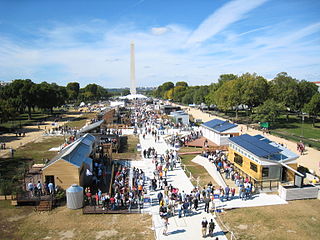
The Solar Decathlon is an initiative of the Department of Energy of the United States (DOE) in which universities around the world compete with the design and construction of sustainable housing that works 100% with solar energy. It is called “Decathlon" since universities and their prototypes are evaluated in 10 criteria: architecture, engineering and construction, energy efficiency, energy consumption, comfort, sustainability, positioning, communications, urban design and feasibility and innovation.
Lucrecia Panchano is a Colombian poet. Her poems, written in the costumbrista style, are considered important historical records for Colombia's Pacific region, because they narrate the cultural traditions of the region's African-descendent population.
